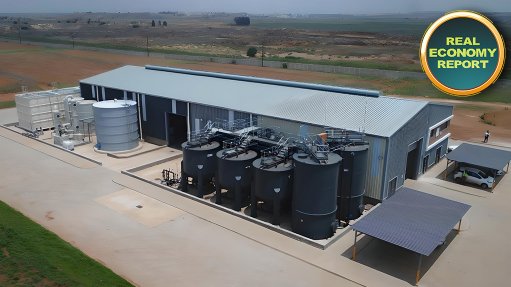South African food inflation maintained its upward momentum in October
Food and non-alcoholic beverage inflation (hereafter referred to, for short, as food inflation) in South Africa continued its upward momentum in October, the Bureau for Food and Agricultural Policy (BFAP) has reported in its latest Food Inflation Brief. In year-on-year (y-o-y) terms, it reached 12%, which was 0.2 percentage points above its previous highpoint, in December 2016. Food inflation accounted for 2.1 percentage points of the consumer price index headline inflation figure of 7.6%. In month-on-month (m-o-m) terms, food inflation was 0.9%.
The food categories which recorded the highest y-o-y inflation were (from highest to lowest) oil and fats (25.7%), bread and cereals (19.5%), meat (10.5%), milk and cheese and eggs (also 10.5%), fish (10.3%), sugar and sugar-rich foods (9.8%), non-alcoholic beverages (9.1%), vegetables (3.9%) and fruit (1.2%). In m-o-m terms, the food category which saw the highest inflation was fruit (4.1%), followed by milk and cheese and eggs (1.4%), while meat, fish, sugar and sugar-rich foods, and non-alcoholic beverages all recorded 1%. Vegetables saw m-o-m deflation of 0.1% and oils and fats deflation of 1%.
“Regarding food, inflationary effects are still driven by agricultural commodities such as maize, wheat, soybeans and sunflower oil,” noted the BFAP in its report. “Local maize prices breached R5 000 per ton in the third quarter of 2022 as the [rand] weakened to above R18.00 to the [US dollar] and global prices continued their upward trajectory.”
Global prices were going up because of lower yields and quality in some northern hemisphere maize regions, and indications that important grain-producing regions in the southern hemisphere would again experience a dry season, as well as the effects of the Ukraine-Russia War. With grains and oilseeds being essential inputs for beef and chicken production, rising prices for these commodities had helped drive up meat prices, worldwide. However, beef prices had now stabilised. Chicken prices were still being pushed up by other factors, including the worst-ever outbreak of avian flu in the northern hemisphere.
October saw a long list of food items with y-o-y inflation above 10% in South Africa. In the order and descriptions given by the BFAP, these were vegetables (onions, peppers, cabbage, tomatoes, lettuce, spinach, beetroot, canned mixed vegetables, and various frozen vegetables); fats and oils (plant oils and mayonnaise), pork (ham), starch-rich foods (wheat flour, brown bread, maize meal, instant noodles, white bread, pasta, breakfast cereals, and baked goods); beverages (coffee, tea and fruit juice), fruit (apples, pineapples and oranges); beef (T-bone, corned beef, offal, mince, chuck, brisket, stew); legumes (canned baked beans); chicken (fresh whole chicken, and frozen but not individually quick frozen chicken portions); dairy (milk, gouda cheese, powdered milk, and sour milk); sugar-rich foods; eggs; and other (whiteners, salt, tomato sauce, soup powder, and chutney).
“High inflation on maize and wheat-based foods was dampened by significant deflation in rice prices,” observed the BFAP. “High inflation on some fruits was dampened by significant deflation in the prices of bananas, avocados and papaya.” And the overall inflation figure for vegetables was brought down because some (potatoes, sweet potatoes and cauliflower) experienced deflation, while others (broccoli, pumpkin, cucumber and carrots) recorded low inflation.
The cost of the BFAP’s thrifty healthy food basket (THFB) increased by 12.5% (or R367) y-o-y and by 0.3% (or R10) m-o-m, to R3 298. The THFB comprised 26 food items from all food groups and was designed to feed a family of two adults, one older and one younger child, for a month. Assuming a family earning two minimum wages, and benefitting from child grants and school meals, in October the THFB would have consumed 31.5% of their total income (up from 31.4% in September).
“Our view is that food inflation will remain high over the next three months as the full effects of persistently increasing commodity prices and weaker exchange rates filter through to retail markets,” stated the BFAP. “We expect that food inflation could peak in the first quarter of 2023, after which the higher base effects apparent from March 2022 will result in smaller inflationary effects during the rest of 2023.”
Comments
Press Office
Announcements
What's On
Subscribe to improve your user experience...
Option 1 (equivalent of R125 a month):
Receive a weekly copy of Creamer Media's Engineering News & Mining Weekly magazine
(print copy for those in South Africa and e-magazine for those outside of South Africa)
Receive daily email newsletters
Access to full search results
Access archive of magazine back copies
Access to Projects in Progress
Access to ONE Research Report of your choice in PDF format
Option 2 (equivalent of R375 a month):
All benefits from Option 1
PLUS
Access to Creamer Media's Research Channel Africa for ALL Research Reports, in PDF format, on various industrial and mining sectors
including Electricity; Water; Energy Transition; Hydrogen; Roads, Rail and Ports; Coal; Gold; Platinum; Battery Metals; etc.
Already a subscriber?
Forgotten your password?
Receive weekly copy of Creamer Media's Engineering News & Mining Weekly magazine (print copy for those in South Africa and e-magazine for those outside of South Africa)
➕
Recieve daily email newsletters
➕
Access to full search results
➕
Access archive of magazine back copies
➕
Access to Projects in Progress
➕
Access to ONE Research Report of your choice in PDF format
RESEARCH CHANNEL AFRICA
R4500 (equivalent of R375 a month)
SUBSCRIBEAll benefits from Option 1
➕
Access to Creamer Media's Research Channel Africa for ALL Research Reports on various industrial and mining sectors, in PDF format, including on:
Electricity
➕
Water
➕
Energy Transition
➕
Hydrogen
➕
Roads, Rail and Ports
➕
Coal
➕
Gold
➕
Platinum
➕
Battery Metals
➕
etc.
Receive all benefits from Option 1 or Option 2 delivered to numerous people at your company
➕
Multiple User names and Passwords for simultaneous log-ins
➕
Intranet integration access to all in your organisation

















